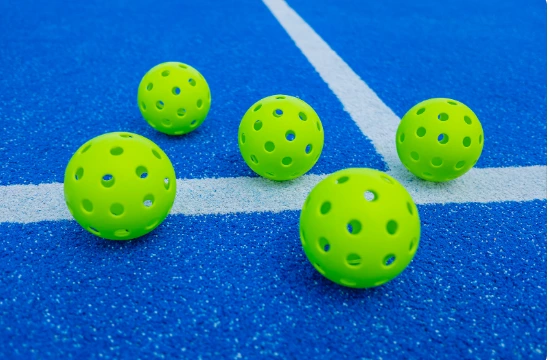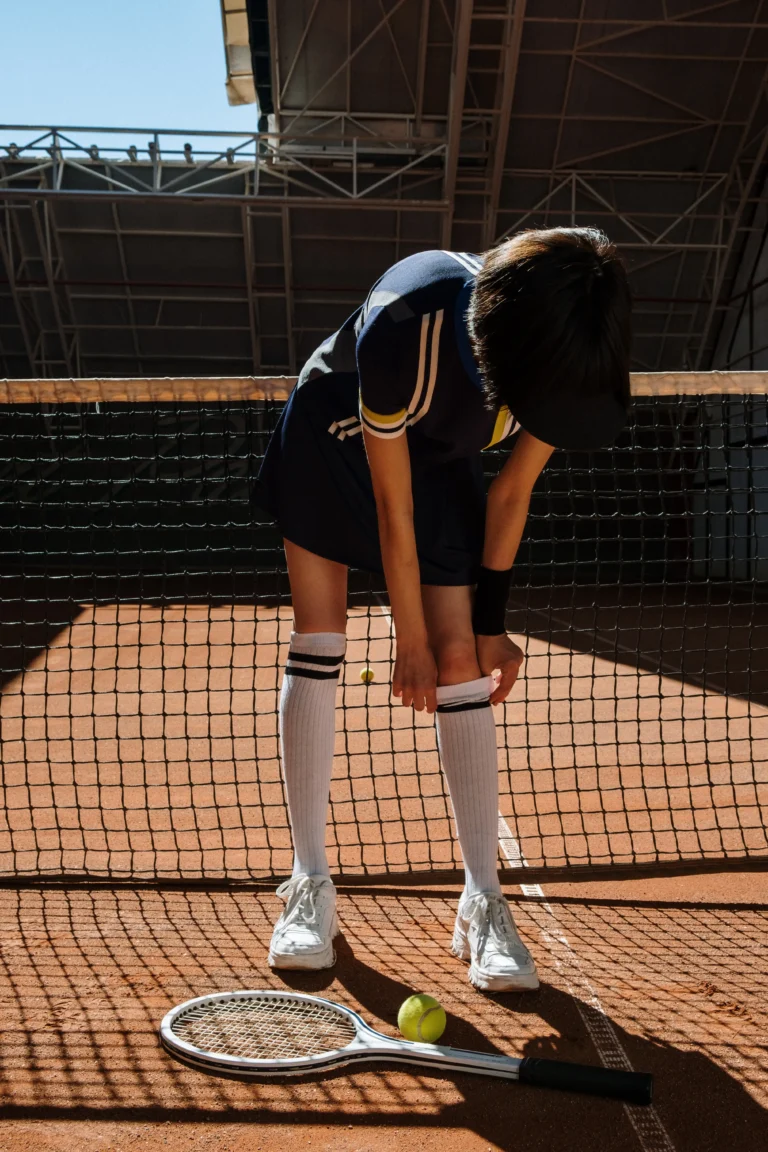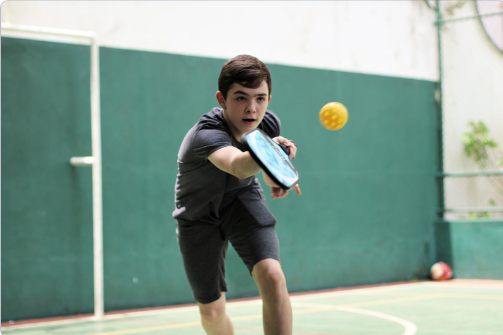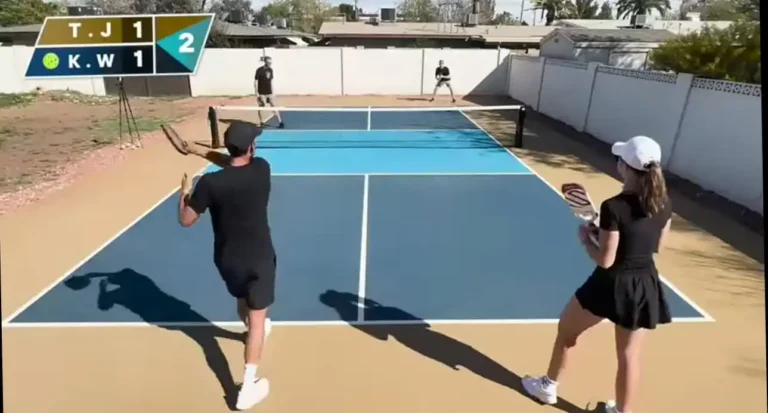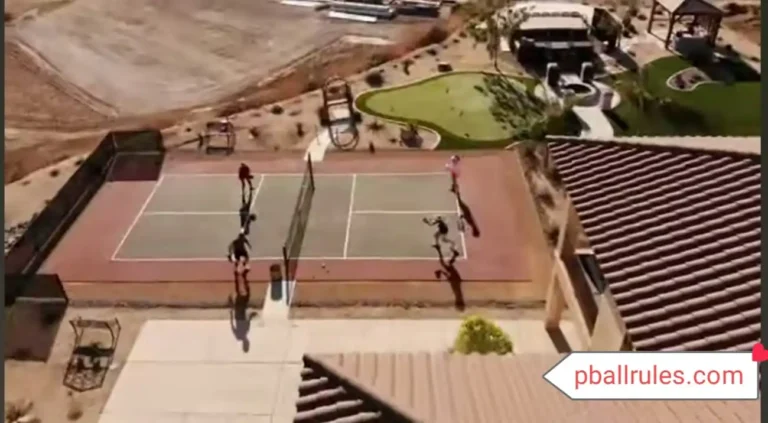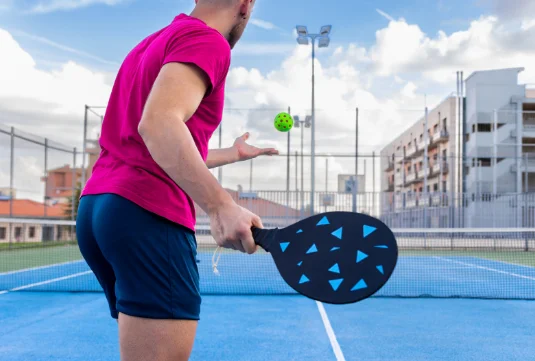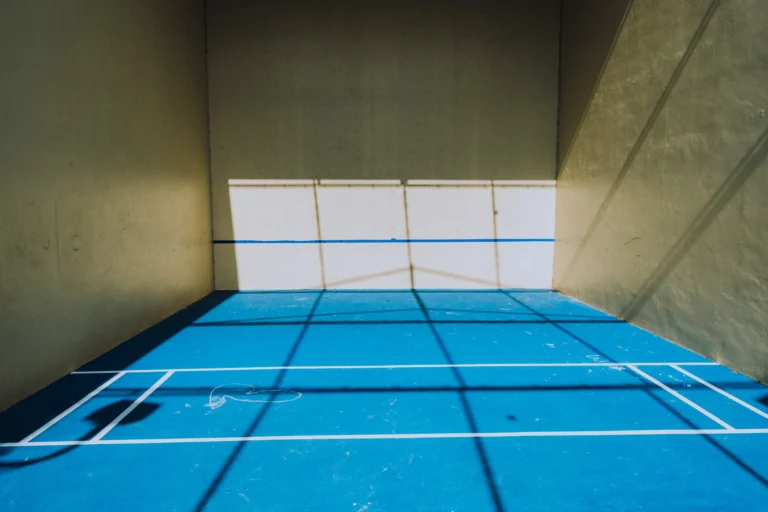Line It Up: How to Properly Paint Pickleball Court Lines
When it comes to setting up a pickleball court, one crucial aspect often overlooked is the precision and clarity of how to paint the court lines properly. These lines are not merely decorative; they define the playing area and are integral to the rules and fair play of the game. Painting pickleball court lines properly ensures players can easily discern the boundaries and zones, such as the non-volley zone, service areas, and baselines.
The process of painting these lines involves more than just laying down some paint; it requires careful preparation, accurate measurement, and precise application techniques. This article aims to guide you through each step of this process, ensuring that by the end, your pickleball court looks professional and adheres to official regulations. Whether you’re setting up a court in a community center, a local park, or your backyard, following these guidelines will help create a functional and visually appealing pickleball court. Stay tuned as we delve into the materials needed, surface preparation, measuring and marking strategies, painting techniques, and more, to help you line up your pickleball court like a pro.
Materials Needed for Painting Pickleball Court Lines
Embarking on the task of painting pickleball court lines requires gathering the right materials to ensure durability, visibility, and precision. The key component is the paint. For outdoor courts, acrylic latex paint is often recommended due to its weather-resistant qualities and ability to adhere well to concrete or asphalt surfaces. Choose a bright color, typically white or yellow, for high visibility against the court’s background.
Aside from paint, you’ll need painter’s tape or masking tape to outline the court lines accurately. This ensures sharp, clean edges and helps prevent paint from bleeding outside the intended lines. A tape measure is crucial for precise measurements, aligning with the official pickleball court dimensions of 20 feet by 44 feet. Additionally, a chalk line marker can be invaluable for creating straight, temporary lines before painting.
For the actual painting process, you’ll need a set of brushes or rollers. While brushes offer more control for finer details, rollers can cover larger areas more quickly. For a more professional finish, consider using a line striping machine, especially if you’re painting multiple courts.
Lastly, don’t forget essential cleaning supplies like brooms and pressure washers for surface preparation, and protective gear for yourself such as gloves and safety glasses. Choosing high-quality materials and tools not only makes the job easier but also extends the lifespan of your court lines, ensuring they remain visible and in good condition for years of gameplay.
Preparing the Pickleball Court Surface
Preparing the surface of a pickleball court before painting is crucial for ensuring the longevity and adherence of the paint. The process begins with a thorough cleaning to remove dirt, debris, and any existing markings or stains. This can be done using a high-pressure washer or a broom for less soiled surfaces. For tougher stains, a cleaning solution appropriate for the court surface (concrete or asphalt) might be required.
Once the surface is clean, inspect it for cracks or damages. Repairing these imperfections is vital as they can affect the quality of the painted lines. Use a suitable filler to patch any cracks and allow it to dry completely.
The next step is to ensure the surface is completely dry before painting. Any moisture can prevent the paint from adhering properly, leading to peeling or chipping over time. A dry, clean, and smooth surface provides the ideal condition for paint to adhere, ensuring crisp lines and reducing the need for frequent touch-ups. This attention to surface preparation significantly extends the lifespan of your court lines, maintaining a professional appearance for your pickleball court.
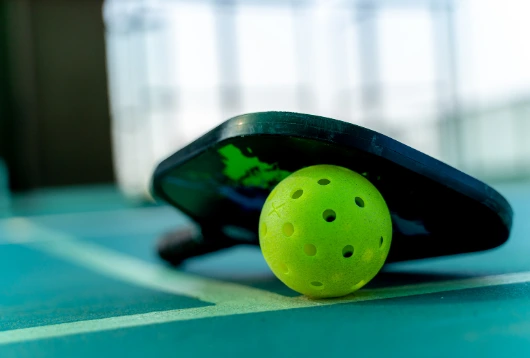
Measuring and Marking the Court Layout
Measuring and marking the court layout accurately is a pivotal step in creating a regulation pickleball court. Begin by understanding the standard dimensions: a pickleball court is 20 feet wide and 44 feet long, with a net dividing it in the middle. Each side of the net is 22 feet in length. The non-volley zone, or ‘kitchen,’ extends 7 feet from the net on both sides.
Start by measuring and marking the outer boundaries of the court. Use a tape measure for accuracy, and mark each corner with a temporary marker, like a chalk or a small flag. It’s important to ensure that the angles at the corners are right angles (90 degrees) for the court to be square.
For the ‘kitchen’ lines, measure 7 feet on both sides of the net, marking them. Again, use the right-angle principle to ensure these lines are parallel to the net.
To ensure straight and precise lines, use a chalk line marker. This tool allows you to create a straight line between two points. Simply anchor the end of the chalk line at one mark, pull the line taut to the opposite mark, and snap it down to leave a straight chalk line on the ground.
When marking the centerline and service boxes, remember that they should be within each 22-foot section, dividing them into equal halves. Accuracy here is crucial for fair play.
Lastly, double-check all measurements before proceeding to the painting phase. This extra step can prevent costly and time-consuming corrections later on. By following these guidelines, you’ll ensure your court is not only up to official standards but also provides a fair and enjoyable playing experience.
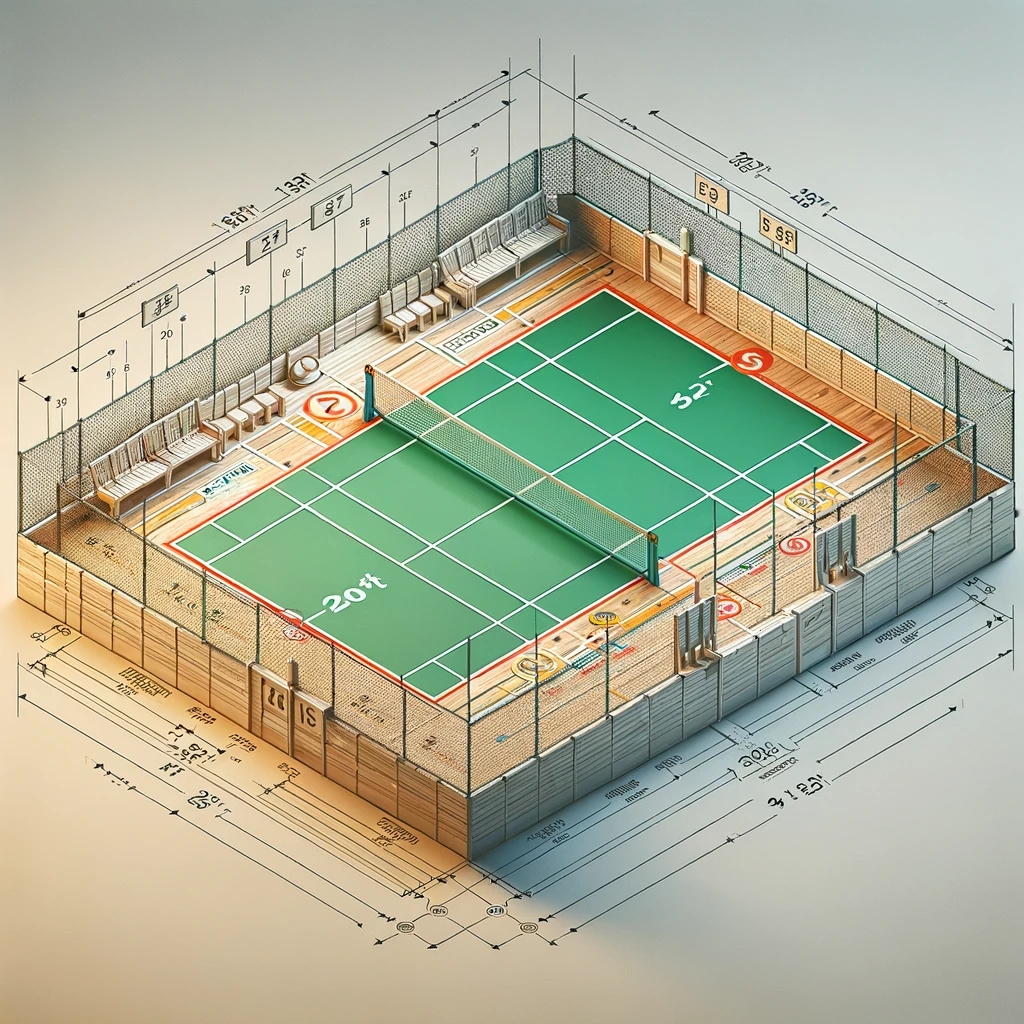
Painting Techniques for Perfect Lines
Achieving perfect lines when painting a pickleball court involves choosing the right technique and tools. Each tool – brushes, rollers, and sprayers – has its unique advantages, and understanding how to use them effectively is key to crisp and even lines.
Brushes: Ideal for detailed work and smaller areas, brushes offer control and precision. When using brushes, apply paint in steady, controlled strokes. For sharper edges, use painter’s tape along the sides of the lines. Dip the brush lightly into the paint to avoid overloading and causing drips or smudges.
Rollers: Rollers are great for covering larger areas more quickly. Use a small to medium-sized roller for better control. When rolling, apply consistent pressure to avoid thick and thin spots. It’s important to keep the roller evenly coated with paint for uniform application. For clean edges, use tape, and roll up to the edge, not over it.
Sprayers: Sprayers offer the quickest application but require a steady hand. Practice on a different surface to get a feel for the sprayer’s operation. Keep the nozzle at a consistent distance from the surface and move at a steady pace to avoid runs and splotches. Masking off areas with tape and plastic sheeting is crucial to prevent overspray.
Regardless of the tool, here are some general tips to ensure even, smudge-free lines:
Always start with a small amount of paint and add more as needed.
Keep a steady pace – too fast can cause uneven lines, too slow might cause drips.
Regularly check for and smooth out drips or uneven patches.
Remove the tape while the paint is still slightly wet to avoid peeling off dried paint.
With these techniques, you can achieve professional-looking, perfectly straight lines that enhance the overall appearance and functionality of your pickleball court.
Drying Time and Post-Painting Care
The drying time for pickleball court lines depends on the type of paint used and environmental conditions. Acrylic latex paint, commonly used for outdoor courts, typically requires a drying time of about 2 to 4 hours under optimal conditions. However, this can vary based on temperature, humidity, and air flow. Cooler, more humid conditions can prolong drying times, so it’s important to check the manufacturer’s recommendations and consider the weather forecast before beginning your project.
Once painted, it’s crucial to allow the court sufficient time to dry completely before use. Walking or playing on the court too soon can smudge the lines and compromise the quality of your work. A good rule of thumb is to wait at least 24 hours before using the court, ensuring the paint has set properly.
Maintaining the lines for longevity involves regular cleaning and inspection. Remove debris and clean the surface gently to avoid wearing out the lines. Avoid using harsh chemicals or abrasive tools that can strip the paint.
Repainting the lines may be necessary every few years, depending on usage and exposure to elements. Fading or chipping paint is a clear indicator that it’s time for a touch-up. Regular maintenance and timely repainting will keep your pickleball court looking fresh and ensure clear demarcations for accurate play.
Common Mistakes to Avoid When Painting Court Lines
When painting pickleball court lines, several common mistakes can affect the quality and accuracy of your work. Awareness and understanding of these pitfalls can help ensure a professional result.
One frequent error is incorrect measurements. The dimensions of a pickleball court are specific and must be adhered to for fair play. Mistakes in measuring can lead to a court that is not regulation size, affecting game dynamics. Always double-check measurements against the official guidelines before marking and painting.
Uneven lines are another common issue. This can result from shaky hands, using the wrong tools, or not applying a consistent pressure when painting. To avoid this, use a chalk line or laser level to create straight, temporary lines on the surface. When painting, take your time and focus on maintaining a steady hand and even pressure. If you’re using a sprayer, keep it at a consistent distance from the surface.
If mistakes do occur, such as drips or smudged lines, they should be corrected promptly. For wet paint errors, quickly wipe off the excess with a damp cloth. For dried paint mistakes, a small amount of paint remover and a fine brush can be used to tidy the edges. In cases of significant errors, it might be necessary to repaint entire sections of the line. Remember, patience and precision are key to achieving neat and accurate court lines.
Conclusion: The Benefits of a Well-Marked Pickleball Court
A well-marked pickleball court is not just a matter of aesthetics; it’s an essential component for fair and enjoyable gameplay. The clarity and precision of court lines play a vital role in ensuring that the rules of the game are followed accurately. Clear lines eliminate ambiguities about in-bounds and out-of-bounds plays, non-volley zones, and service areas, making the game more enjoyable and competitive for all players.
Moreover, a well-painted court enhances the overall look and feel of the playing area. It reflects a sense of professionalism and care, which can be inspiring and inviting for players. Whether it’s a community park, a sports club, or a private residence, a visually appealing court can attract more players and encourage a love for the game.
By following the guidelines outlined in this article – from choosing the right materials and preparing the surface to precise measuring, marking, and painting techniques – you can achieve a high-quality pickleball court that stands the test of time. Regular maintenance and care will ensure the longevity of your court, providing a consistently excellent playing experience.
In conclusion, taking the time to accurately paint and maintain your pickleball court lines will pay off in the long run, enhancing the enjoyment of the game for everyone who steps onto the court. Remember, a well-marked court is not just a playing area; it’s the foundation of every great pickleball game.

